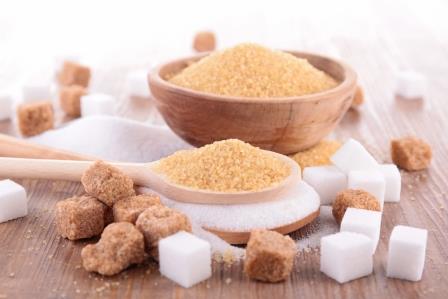Psychic Blog
Sugars: Let’s Talk About Sugar!
16 Oct 2020

Plenty of food groups have been demonised over time, and sugar seems to be in the spotlight once more. With the government bringing in ‘sugar taxes’, and targeting food & drink industries to reduce sugars in their products.
As is often the case with such dietary advice, the messages can get confused. So, we take a look at what the guidelines are for sugar levels on a day-to-day basis. What is the difference between natural and added sugars, and how can we recognise sugars on labelling.
Guidelines
In the UK the government recommends that our sugar intake is about 5% of our daily energy. For the average adult, this would translate to about 7 teaspoons or 30g.
The above limits are for foods that contain added sugar. They should not be confused with foods that contain naturally occurring sugars (sometimes referred to as ‘Intrinsic Sugars’. Such as those found in milk and milk products, vegetables and whole fruit.
Sugar Names
If you look on food packaging, it’s not always as easy to spot sugar as you might imagine, largely because it comes in many forms, with lots of different names. Here are some examples:
Malt Extract, Glucose Syrup, Lactose, Galactose, Coconut Sugar, Palm Sugar, Sucrose, Maltose, Corn Syrup, Honey, Hydrolysed Starch, Invert Sugar, Fructose and Molasses to name a few…
Free Sugars
The name ‘Free Sugars’, is confusing in itself, the use of the word free might suggest that these are not a problem, but in fact they relate to the sugars that manufacturers add to products. It also refers to sugars that are naturally present in products like fruit juice, honey and syrup etc. Things that can make up part of a balanced diet, but that should be restricted in quantity.
Labelling
Food/Drink producers don’t always help the situation with the way they label things, oftentimes trying to make things sound healthier than they are. For example:
100% Natural Sugar, No Added Sugar, No Added Sugar Cane, Sugar-Free, 50% Less Sugar, and so on.
The best policy is to check the product label, and identify the sugars, a good place to start is looking at those ingredients ending in ‘-ose’.
Artificial Sugars
Artificial sweeteners may have a place in reducing calories as part of a controlled diet. However, they may not be any good at reducing our reliance on sweet tasting things.
Many available on the market now are derived from plants, such as Stevia and Agave. However, it is still important that people understand the impact that sweeteners can have on blood sugar levels, particularly those with diabetes.
Quick Ways to Lessen the Sugar Load
Switch to a lower GL diet.
Remove white, processed carbs from your diet, and switch over to brown, wholemeal and wholegrain alternatives.
Choose whole foods and cook more meals from scratch.
Check the products you have at home for lurking sugar – you might be surprised how much they contain: pasta sauces, cereal, soft drinks, juices and condiments for example.
Useful Links:
www.nhs.uk/common-health-questions/food-and-diet/how-much-sugar-is-good-for-me/
www.healthyfood.com/advice/how-to-be-sugar-smart/
TweetBrowse Our Blog
Categories
- Blog Home
- Angels
- Astrology
- Book Reviews
- Celebrity
- Crystals
- General
- Love
- Mediumship
- Paranormal
- Readers
- Seasons
- Special-Offer
- Spirituality
- Superstitions
- The Psychic Gift
- Wellbeing